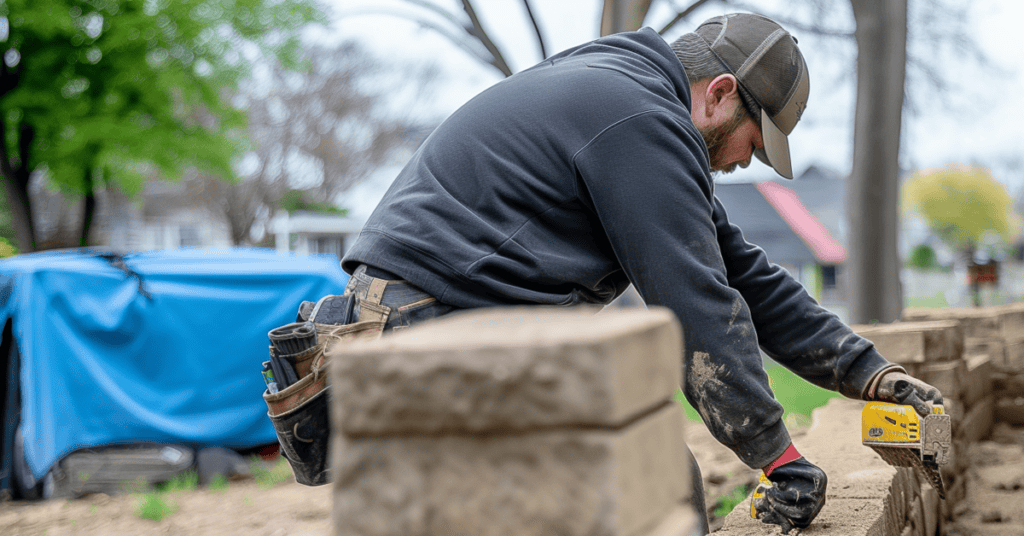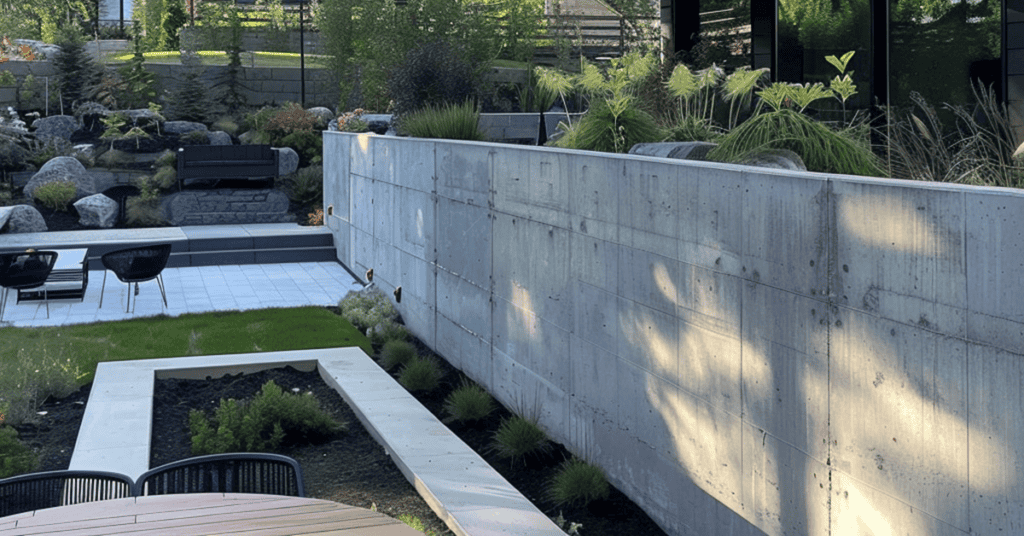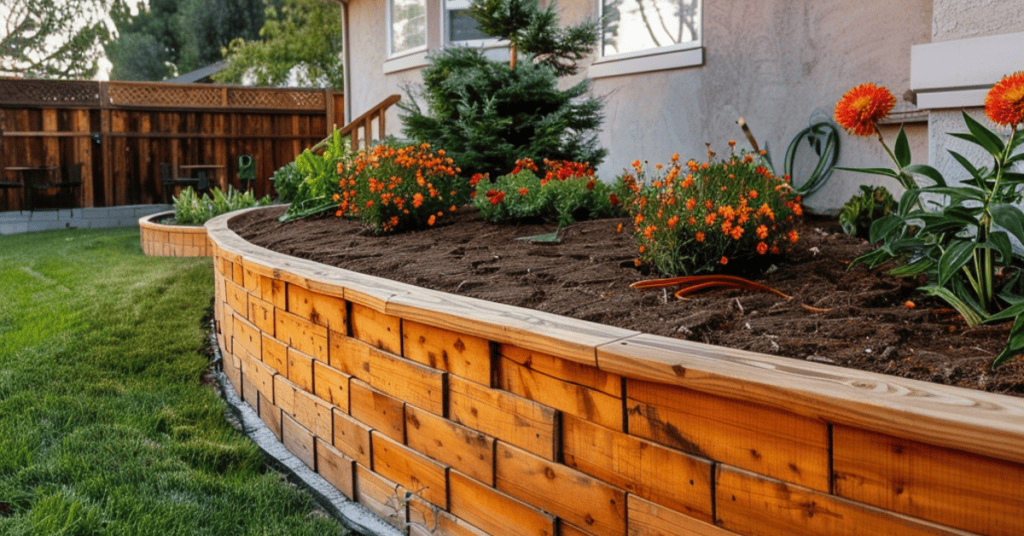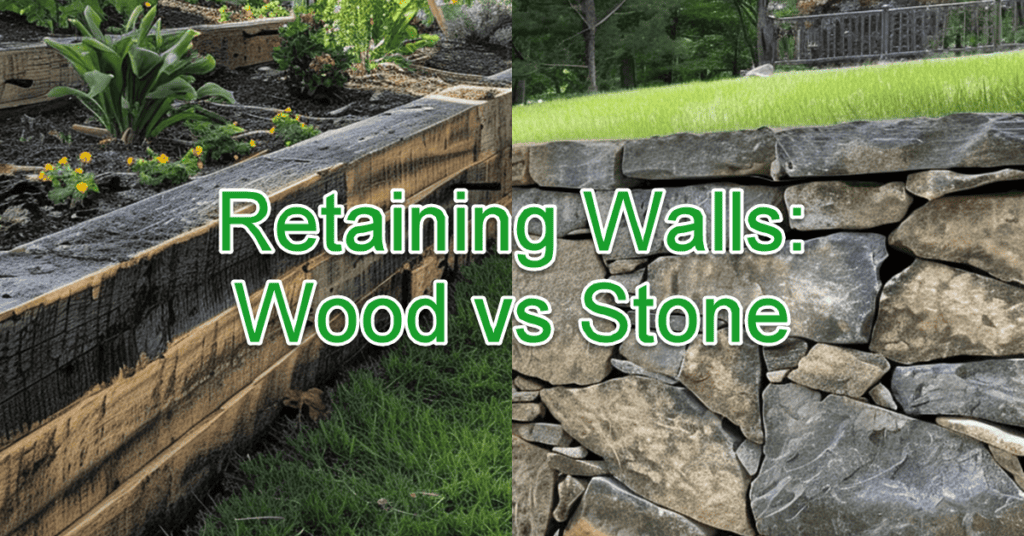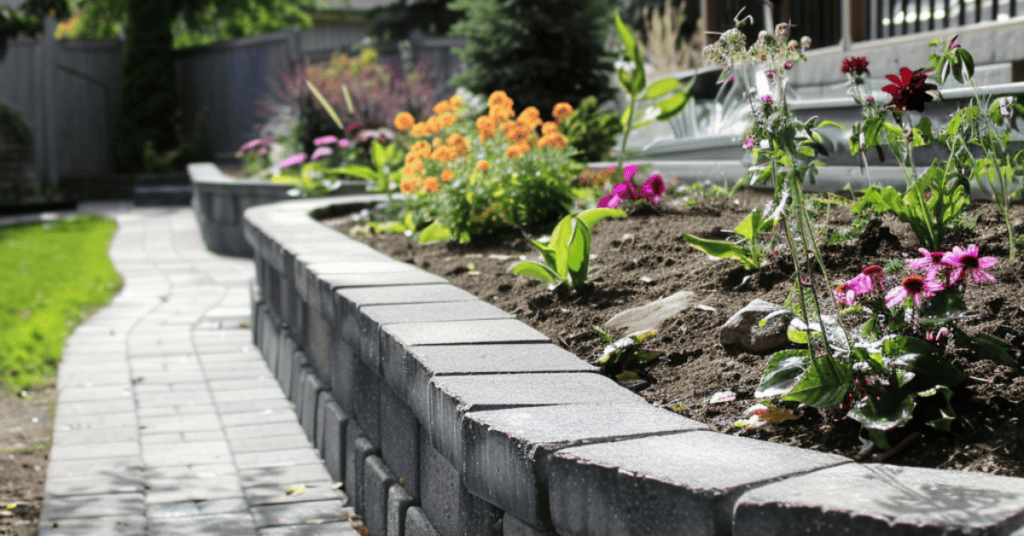Preventing Hydrostatic Pressure Build-Up
Weep holes help prevent hydrostatic pressure from building up behind retaining walls. When rainwater or groundwater accumulates behind a wall, it creates hydrostatic pressure.
This pressure can exert significant force on the wall, causing potential damage or even failure. By providing a pathway for the water to escape, weep holes reduce this pressure.
This drainage reduces the need for thicker walls and heavy reinforcement. Properly spaced weep holes can manage water levels effectively. Typically, these holes are spaced about 450 mm apart to ensure adequate drainage.
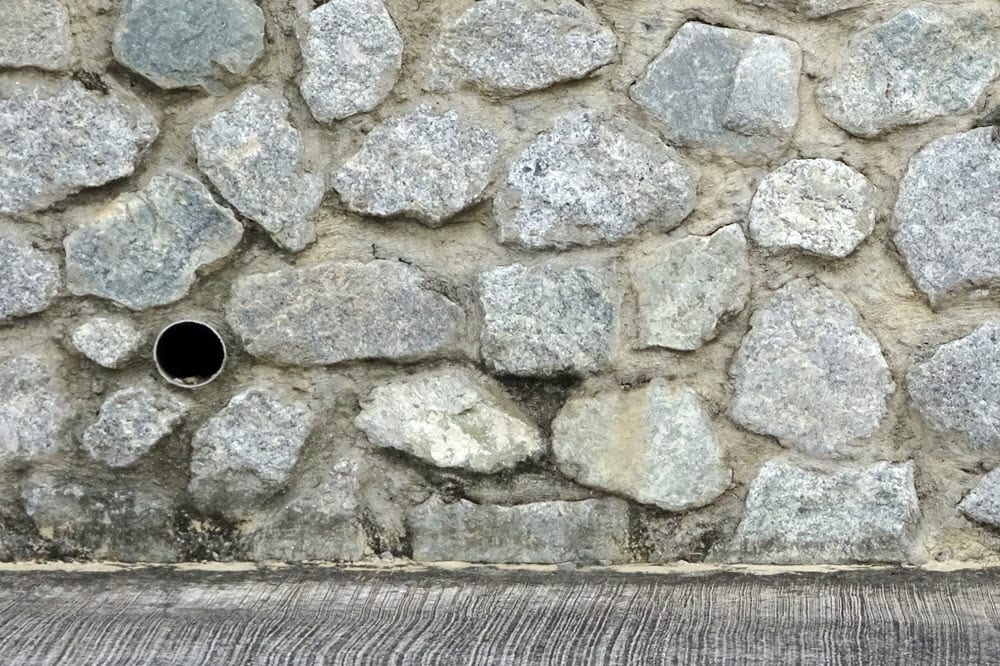
Weep Holes Allow Water to Drain From the Upslope Side of the Retaining Wall. They’re located towards the bottom of the wall
As far as placement goes, weep holes are located towards the bottom of the retaining wall. Gravel and pipes can be used to keep the pipe clear and to ensure proper retaining wall drainage.
What is a Weep Hole and What is its Function?
Design and Types of Weep Holes
Open Head Joint Weep Holes
Open head joint weep holes are typically found in brick or masonry walls. They are created by leaving vertical gaps in the mortar joints between bricks. These gaps allow water to drain from the wall’s interior. They are easy to construct and cost-effective, making them a popular choice in many types of construction.
Cotton Rope Wicking Weep Holes
Cotton rope wicking weep holes use a piece of cotton rope embedded in the wall to draw water out. The rope acts as a wick, absorbing water from the wall’s interior and directing it outside. This method is effective in draining water slowly, reducing the risk of damage due to water pressure.
Tubes Weep Holes
Tubes weep holes involve placing small hollow tubes into the wall during construction. These tubes, made from materials like plastic or metal, create a direct pathway for water to escape. They can be circular or rectangular, depending on the design needs and aesthetic preferences.
Materials and Construction
Various materials and precise construction techniques are crucial to ensure the effectiveness and durability of weep holes in retaining walls. The type of material impacts the drainage capability and longevity of the structure, whereas construction techniques ensure consistent performance.
Selection of Materials for Optimal Performance
The choice of materials for weep holes greatly influences their performance. Brick masonry and mortar joints are common in constructing weep holes, especially in masonry walls and brick walls. These materials facilitate effective water drainage by allowing gaps that permit water to escape.
Gravel is usually placed behind the wall to improve drainage. The use of metal tubes or plastic pipes can also create efficient weep holes, ensuring durability and resistance to blockage.
When choosing materials, it is essential to match them with the specific requirements of the retaining wall, ensuring optimal performance and long-term stability.
Construction Techniques for Enhanced Longevity
Proper construction techniques are vital to enhance the longevity of weep holes. Installing weep holes in retaining walls at the correct intervals, typically a weep hole is placed every 450 mm to 600 mm, allows for effective water drainage. Ensuring precise placement during the building process is essential to prevent water accumulation.
Incorporating filter fabric in the cavities behind the retaining wall can help in preventing soil from clogging the weep holes. Using appropriately-sized metal tubes or forming gaps between brick masonry during the laying of mortar joints ensures effective and long-lasting weep holes.
Maintenance and Risks
Proper maintenance of weep holes in retaining walls is essential to prevent clogs and avoid pest entry. These issues can lead to severe consequences such as water damage, pressure build-up, and structural failure.
Preventing and Managing Clogs
Clogging in weep holes often results from debris and mold build-up. Regular inspection and cleaning are necessary to ensure these apertures remain clear.
A simple way to manage clogs is by using a wire brush or air blower to remove blockages. Much in the way that a perforated french drain is covered with a mesh sock to prevent debris and silt from seeping in, mesh covers can also prevent debris from entering weep holes.
If water does not flow through the weep holes after storms, it may indicate a severe clog. In such cases, more intensive cleaning or professional help might be required to address the issue effectively and prevent water damage and structural failure.
Dealing with Pest Entry Through Weep Holes
Weep holes can sometimes serve as entry points for pests like rodents and insects. This issue compromises the structural integrity and hygiene of the retaining wall.
Installing pest barriers like stainless steel or plastic meshes can block pest entry while allowing water to pass through. Regularly check for signs of pest activity near weep holes such as droppings or nesting material.
Immediate action is crucial at the first sign of pests to avoid further damage and ensure proper drainage and ventilation.
Key Considerations in Engineering
When designing retaining walls, engineers must address several vital factors to ensure stability and effectiveness. These considerations include managing water pressure with weep holes and determining appropriate reinforcement for different wall types.
Hydrodynamics and Wall Stability
Weep holes are essential for reducing hydrostatic pressure on retaining walls. By allowing water to drain, they help prevent water buildup behind the wall, which can lead to structural failure. Proper spacing, typically around 450 mm, is crucial for effective drainage. Weep holes also alleviate buoyancy and uplift forces, contributing to the wall’s stability. This is especially important in areas with high water tables or heavy rainfall, where water pressure can significantly impact retaining wall performance.
Designing for hydrodynamics involves considering both horizontal and vertical spacing of weep holes. Engineers often stagger weep holes to enhance water flow and reduce pressure zones. The distance from the bottom of the wall and the slope degree of the weep holes must also be calculated to maximize efficiency. These measures ensure that the retaining wall remains stable under varying water conditions.
Reinforcement Requirement for Different Wall Structures
The reinforcement requirements of retaining walls depend heavily on the type of wall and the loads it will support. Weep holes play a role here by reducing the need for excessive reinforcement. By draining water, they lower the earth pressure behind the wall, allowing for a thinner wall design and less reinforcement.
Retaining walls without adequate weep holes might need additional reinforcement to counteract the increased pressure from water buildup. Different wall structures, such as gravity, cantilever, and anchored walls, each have unique reinforcement needs. Engineers must carefully assess these needs to ensure structural integrity.
The goal is to achieve a balance where the wall is strong enough to support the load without being over-engineered. Proper structural design and reinforcement considerations are crucial for the long-term durability and safety of the retaining wall.
Special Applications
Weep Holes in Bridge and Wing Walls
Weep holes in bridges and wing walls are essential. They allow water to escape, preventing water pressure build-up. This reduces potential damage from hydrostatic pressure and keeps the structure stable.
In bridge designs, these holes are often placed near the base. This helps minimize water accumulation. In wing walls, which extend from the end of bridges, proper drainage is crucial to prevent erosion and maintain the structural health of the abutments.
Window and Door Frame Weep Holes
In buildings, weep holes are often integrated into window and door frames. These small openings allow condensation and rainwater to drain out, preventing water damage to interior walls. They also help avoid mold and mildew buildup, maintaining indoor air quality.
For window frames, proper placement helps in channeling away any water that seeps between the frame and the wall. In door frames, these holes are typically located at the bottom to aid drainage and prevent water pooling.

